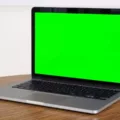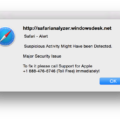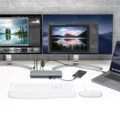Are you seeing lines across your Macbook screen? This can be a frustrating issue, and it’s important to understand the root cause so that you can take the appropriate steps to fix it. In this blog post, we’ll talk about what could be causing these lines and how to fix them.
First things first, let’s identify what type of lines you are seeing on your screen. Are they straight or diagonal? Vertical or horizontal? Thin or thick? This information will help us narrow down the potential causes.
If the lines are thin and appear in a pattern, then it could be caused by a faulty LCD display panel. If this is the case, then you’ll need to get the screen replaced in order to correct the issue.
On the other hand, if the lines are thick and/or form an irregular pattern, then it could be an issue with your graphics card or GPU. To troubleshoot this type of problem, try resetting your SMC (System Management Controller) or NVRAM (Non-Volatile Random Access Memory). This can often solve issues with graphics cards not functioning properly.
It’s also possible that outdated drivers or software on your device may be causing issues with your graphics card. Make sure that all of your device drivers are up-to-date and that you have installed any available updates for macOS before attempting other fixes.
If none of these solutions work, then you may need to replace your MacBook’s graphics card altogether. It may also be worthwhile to bring your device in for repair so that a technician can take a closer look at what might be causing the display issues on your Macbook screen.
Lines across a Macbook screen is certainly an annoying issue, but hopefully, these tips will help you resolve it quickly and easily!

Fixing Lines on a Mac Screen
If you are seeing lines or artifacts on your Mac screen, there are a few things you can try to fix the issue.
First, restart your Mac by going to the Apple menu and selecting “Restart”. This is often enough to resolve temporary glitches.
If that does not work, check the cable connection between your Mac and monitor. Make sure it is firmly secured in both ports.
If the problem persists, connect another display to your Mac and see if the lines are present on that display as well. If they are, then the issue is with your Mac and not the display.
Next, reset your System Management Controller (SMC) by powering off your Mac and pressing a specific key combination while powering back on again. The exact key combination depends on which model of Mac you have; please refer to Apple’s documentation for instructions specific to your model: https://support.apple.com/en-us/HT201295
You may also want to reset NVRAM (Non-Volatile Random Access Memory). To do this, power off your Mac again and press Command + Option + P + R simultaneously when powering back on again until you hear a second startup chime.
Be sure to also check for any updates for any external graphics cards installed in your Mac and install them if they’re available. Additionally, you may want to reinstall your current macOS version as well as any applications that were running when you first noticed the lines appearing on the screen.
Investigating Horizontal Lines on a Mac Screen
There could be a few different reasons why there are horizontal lines on your Mac screen. It could be that the cable connecting your Mac to the external monitor is not connected securely at both ends, or it could be that the cable is faulty. It could also be an issue with your graphics card, or it could be caused by a software issue. You can try changing the cable and checking for any software updates to see if this resolves the problem.
Fixing Horizontal Lines on a Laptop Screen
If you find that there are horizontal lines appearing on your laptop screen, there are a few steps you can take to try and fix them. First, turn your laptop off and then back on again. This can often help to clear up any temporary software faults that may be causing the lines to appear. If this doesn’t work, restart the computer completely by turning off the power and then turning it back on.
If these steps don’t help, try disconnecting your laptop from any external monitors or devices that may be connected and then check if the lines have cleared. If they haven’t, close your laptop and reopen it again to see if this helps. It is also important to make sure that your laptop is placed on a hard surface when in use as sometimes placing it on soft surfaces such as a bed or lap can cause lines to appear on the screen.
Finally, make sure that you have installed all of the latest updates for your operating system as this can help with any software issues that may be causing the lines to appear. If none of these steps work, it may be necessary to contact tech support for further advice or potentially get a replacement laptop screen as there could be an issue with the hardware itself.
Diagnosing Vertical Lines on a Computer Screen
If your screen is displaying vertical lines, it could be caused by a number of factors. The most common cause is a refresh rate setting that is too high for your monitor. To check if this is the case, right-click on the Desktop once Windows has loaded and choose “Screen Resolution.” Click “Advanced Settings” and then “Monitor” to view the refresh rate settings. If the refresh rate setting is too high, try lowering it to see if the lines disappear. Other possible causes of vertical lines include loose or faulty cables, outdated video drivers, or an issue with your monitor itself such as failing capacitors or a broken display panel.
Conclusion
In conclusion, if your MacBook screen is displaying lines across it, there are a few potential solutions you can try. First, restarting your Mac can help with temporary issues and system glitches. You should also check the cable connection for external monitors and try a different cable if you have one. You may also need to reset the SMC, and NVRAM, install graphic card updates or reinstall your current macOS. If the issue persists after trying all of these options, it’s best to consult a professional technician to diagnose and resolve the issue.








